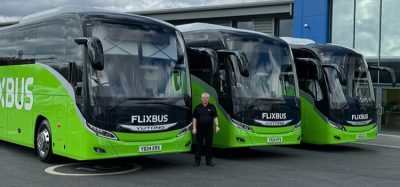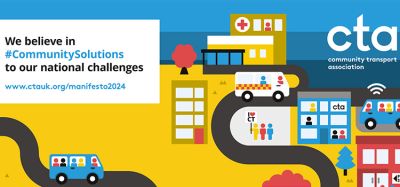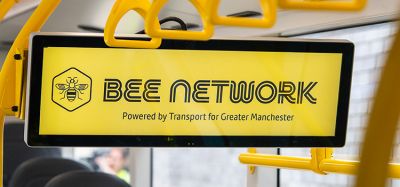Intelligent Transport’s Leaders’ Series 2017: Jacob Bangsgaard
- Like
- Digg
- Del
- Tumblr
- VKontakte
- Buffer
- Love This
- Odnoklassniki
- Meneame
- Blogger
- Amazon
- Yahoo Mail
- Gmail
- AOL
- Newsvine
- HackerNews
- Evernote
- MySpace
- Mail.ru
- Viadeo
- Line
- Comments
- Yummly
- SMS
- Viber
- Telegram
- Subscribe
- Skype
- Facebook Messenger
- Kakao
- LiveJournal
- Yammer
- Edgar
- Fintel
- Mix
- Instapaper
- Copy Link
Posted: 10 April 2017 | Jacob Bangsgaard (CEO of ERTICO – ITS Europe) | No comments yet
In the second instalment of our Leaders’ Series, Jacob Bangsgaard, CEO of ERTICO – ITS Europe, gives his take on how intelligent transport systems (ITS) can improve public transport services and discusses how Mobility as a Service (MaaS) could change people’s travel habits.
For those who are not familiar, can you give us some background information on ERTICO – ITS Europe and what the organisation’s aims are?
ERTICO – ITS Europe is a public-private membership-driven organisation that works on the deployment of intelligent transport systems (ITS) in Europe. ERTICO was founded in 1991 under the initiative of 16 leading members of the European Commission, Ministries of Transport and European industry.
We are now the reference organisation in Europe for ITS deployment. We have, in our partnership of over 100 entities, all the stakeholders needed to drive ITS forward. Of course, there are other organisations that are not yet part of the ERTICO family, and as the mobility sector evolves to include tech companies, start-ups and mobility operators etc. we need to include these players.
In today’s fast-paced world, how can ITS improve inner-city public transport services?
People commute into cities every day – all with different mobility needs, values, and habits. The transport industry recognises that people’s transport habits are changing and it must adapt accordingly. Some people might not want, or afford, to own a car and public transport could be one of the solutions for them; however, to be considered as a viable alternative the public transport network needs to be efficient.
This is where ITS comes in. Applications providing real-time information to travellers, connected infrastructure, electric and, eventually, autonomous vehicles can improve urban mobility in the following ways: by reducing waiting times for buses; easily adjusting travel plans in case of delays or roads closures; reducing congestion; and cutting CO2 emissions in urban areas. ITS can be the answer for many frustrated users who don’t want to waste their time at bus or train stops, while also helping local authorities improve their public transport services and urban mobility.
Mobility as a Service (MaaS) is a growing innovation; how do you see it evolving to benefit urban mobility?
Many ITS services are already there – the technology is available but the information is not integrated. Integration is one of the biggest challenges for MaaS. If, instead of buying three different tickets to move from A to B, they can subscribe to an integrated service that can be used on different transport platforms in one go, more people would be willing to exploit this solution.
MaaS will evolve in this direction by integrating various services from a number of different providers and by creating cross-border business agreements which benefit users. As a result, people will eventually change their mobility behaviours.
We have some examples of MaaS already in Europe, such as the Whim app, powered by MaaS Global. Also, in the West Midlands region of the UK, important partnerships between public transport operators and private companies for their MaaS solutions have been created, and the city of Ghent in Belgium is currently developing a pilot which could extend to Antwerp. These solutions will make journeys more efficient and encourage customers to exploit the public transport network.
What ITS challenges do you think the inner-city public transport industry will face in the coming years?
With more than three million people a week moving to cities across the world, the number of travellers on roads and public transport will continue to increase. There is also a demand for public transport to become more personalised. People will soon become more connected and will want to access real-time information. As users will want to choose the best option according to their needs, and ITS will have to find bespoke solutions for each individual. The public transport industry – including city authorities, public transport operators and infrastructure etc. – will also have to work with the private sector when looking for affordable yet competitive solutions. MaaS is the future of mobility but many legal, technical, and market-focused aspects need to be clarified.
At ERTICO we are managing the MaaS Alliance to monitor these challenges, demands and developments and are creating a common framework for MaaS in Europe. We want to involve the public transport industry to ensure that all sides are heard.
What experience/qualities do you personally bring to ERTICO – ITS Europe?
I know the organisation and the partnership very well – I joined 10 years ago and have been a Board Member for the past five. Besides my experience at ERTICO managing international cooperation, I bring over 20 years of experience in working with and for public authorities, the private sector and users, so I can safely say that I have covered all areas of transport policy. I have a deep knowledge of the sector in Europe and a great deal of expertise in liaising with the European institutions and cultivating international relations.
Related topics
Business Models, Fleet Management & Maintenance, Intelligent Transport Systems (ITS), Multimodality, Ticketing & Payments, Transport Governance & Policy
Issue
Issue 2 2017
Related organisations
ERTICO - ITS Europe
Related people
Jacob Bangsgaard








